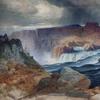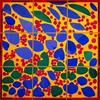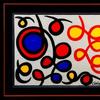Innovating From Antiquities, Rubens Masterfully Took Inspiration From a Wealth of Sources
- October 20, 2021 17:47

Paintings and drawings by Rubens reunite with antiquities that inspired them
The Flemish master Peter Paul Rubens’s (1577-1640) passion for the classical past shaped his personal values and provided him with powerful artistic inspiration. Rubens: Picturing Antiquity at the Getty Villa Museum this fall is the first exhibition to focus on Rubens’ fascination with the art and literature of ancient Greece and Rome. This single-venue presentation demonstrates some of the intriguing ways in which the innovative artist both celebrated and transformed his diverse sources, including antiquities from his own collection.

Rubens was one of the most erudite artists of the seventeenth century. Throughout his life he read classical literature in the original languages, studied the physical remains of ancient (primarily Roman) civilization, collected marble sculptures and carved gems, and conducted lively correspondence with fellow antiquarians across Europe.
“This important exhibition examines how Rubens's fascination with ancient Roman antiquities inspired his many classicizing paintings, which are among the most erudite and sophisticated images in European art,” says Timothy Potts, Maria Hummer-Tuttle and Robert Tuttle director of the J. Paul Getty Museum. “Rubens had an extraordinary ability to translate ancient sculptures and gems into dynamic and colorful compositions, adopting the classical attributes of robust strength and idealized beauty as hallmarks of his own art. The first exhibition to focus on this key aspect of European painting, Rubens: Picturing Antiquity will be a rare opportunity to explore the impact that ancient art had on Rubens' distinctively expressive Baroque style.”
In 1600, Rubens traveled to Italy and was soon employed as court artist by Duke Vincenzo Gonzaga in Mantua. During the next eight years in Italy, he avidly studied a variety of ancient marble sculptures and reliefs in Mantua and Rome. This exhibition unites for the first time the ancient sarcophagus panel depicting Meleager’s hunt for the ferocious Calydonian boar the artist saw in Rome and Getty’s The Calydonian Boar Hunt by Rubens (acquired in 2006). The pairing provides a brilliant example of Rubens’s transformation of ancient sculpture into a vivid composition that enthralls viewers.

While in Rome, Rubens was able to gain access to important private collections of antiquities. This immersive experience had a profound impact on his art. On display in the exhibition, Self-Portrait with a Group of Friends in Mantua, his earliest self-portrait, attests to the camaraderie Rubens found among a circle of scholars and artists devoted to the ideals of classical antiquity.
Rubens took an innovative approach to drawing after classical sources. He studied individual sculptures over and over again, copying them from many and often unusual points of view, with painstaking attention to both their overall composition and specific details. “He sought to convey a sense of flesh and blood in these figures, depicting them with dynamism, pathos, and drama,” notes Davide Gasparotto, senior curator of paintings and chair of curatorial affairs at the Getty Museum and co-curator of the exhibition. “These qualities became the distinguishing traits of Rubens’ own art.” On display in the exhibition are remarkable chalk drawings that show Rubens’s process of studying well-known and celebrated ancient sculptures.
Jeffrey Spier, senior curator of antiquities at the Getty Museum and co-curator of the exhibition, emphasizes the importance of rare, portable antiquities to Rubens’s pictorial inventions. “Rubens was an avid collector of ancient gems, each a unique work carved by hand. He appropriated and reinterpreted imagery from these rare objects as well as ancient coins for his own compositions.” Rubens’s painting of a spectacular cameo, known as the Gemma Tiberiana, will be on display in the exhibition. One of the highlights of the exhibition is the Gemma Constantiniana, a huge cameo possibly owned by Rubens, and a key source of inspiration for him.
Rubens’s elaborate designs for the city of Antwerp’s triumphal entry to celebrate the Cardinal-Infante Ferdinand in 1635 were the most ambitious and eloquent expression of his deep knowledge of the political theater of the classical past. The display includes Rubens’s lively oil sketches for the Stage of Welcome, as well as the commemorative volume, Pompa Introitus Ferdinandi (1642), written by Jan Gaspar Gevaerts and illustrated with engravings of the triumphal arches and other features by Theodoor van Thulden (Getty Research Institute).
Ancient stories about the lives and loves of the gods supplied Rubens with stimulating subjects for painting. He synthesized these familiar literary sources and incorporated overt references to ancient sculpture to convey his highly individual vision of a living classical past. Diana and her Nymphs on the Hunt, acquired by J. Paul Getty, will be on view for the first time following cleaning and restoration of the frame. The exhibition features major international loans, including the important ancient statue Silenus with a Wineskin from Dresden, shown with Rubens’s chalk drawing and oil painting of the Drunken Silenus, and Rubens’s extraordinary interpretation of an ancient fertility myth, The Finding of Erichthonius (Vaduz-Vienna).
“Rubens had a unique way of breathing life into the ancient works that inspired him,” says Anne Woollett, curator of paintings at the Getty Museum and co-curator of the exhibition. “This exhibition vividly shows how he manipulated his sources from antiquity and brilliantly re-imagined the classical past.”
Rubens: Picturing Antiquity will be on view at Getty Villa Museum November 10, 2021 – January 24, 2022. A catalogue, edited by Anne T. Woollett, Davide Gasparotto, and Jeffrey Spier, with an essay by Adriano Aymonino and Eloisa Dodero (Getty Publications), accompanies the exhibition.













_(17100x100_c.jpg)






